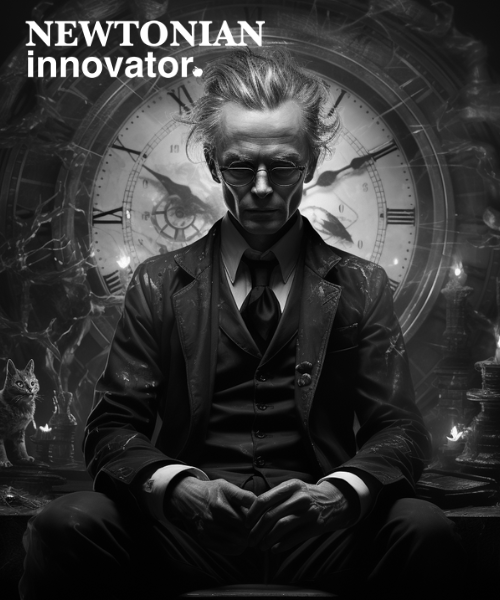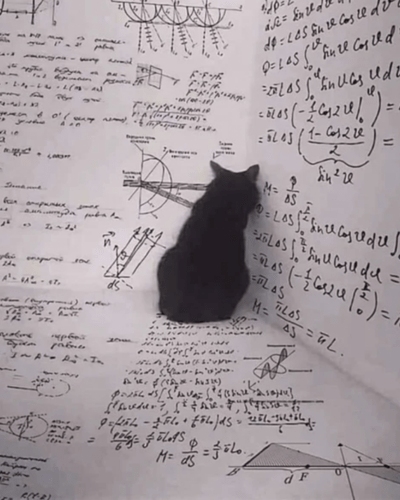Schrödinger’s cat is a famous thought experiment proposed by physicist Erwin Schrödinger in 1935. It was devised to illustrate the paradoxical nature of quantum superposition, in which a quantum system can exist in multiple states simultaneously until it is measured.
Erwin Schrödinger was an Austrian physicist born in 1887, most famous for his work on quantum theory and wave mechanics. In 1933, he won the Nobel Prize in Physics for his discovery of new productive forms of atomic theory. Schrödinger studied at the University of Vienna and had a lifelong interest in philosophy, heavily influencing his unorthodox perspective on physics. He held academic positions at the Universities of Zurich, Berlin, and Graz before moving to Ireland in 1940 after rising anti-Semitism in Nazi Germany.
In his personal life, Schrödinger had unconventional romantic relationships, living in a ménage à trois with his wife Anny and his mistress Hilde. He also had romantic interests with other women while married. Schrödinger loved the outdoors, often hiking and skiing in the Alps, and was an avid collector of ancient texts on religion and philosophy. He was known for his strong opinions, intense curiosity, and individualistic lifestyle. Schrödinger continued his prolific research and teaching in Dublin until his death in 1961 at 73 years old. Despite controversy in his personal affairs, he left a lasting legacy for his pioneering work in quantum theory.

The details of the thought experiment involves placing a cat inside a steel chamber along with a device containing a small amount of radioactive substance. Even a very small amount of radioactive substance has a random chance of decaying over a given period of time. In Schrödinger’s scenario, the radioactive substance has a 50% chance of decaying within one hour.
Also placed in the steel chamber is a vial of poison gas. The vial is rigged so that if even one atom of the radioactive substance decays, it will trigger a hammer to break the vial and release the poison gas, which will kill the cat. There is no way to predict in advance whether radioactive decay will occur.
According to the principles of quantum mechanics, until the box is opened and measured, the radioactive source exists in a superposition of two quantum states – decayed and undecayed. Therefore, without opening the box to observe it, the cat would also have to be considered to be in a superposition of two states–-alive and dead.
This implication seems absurd – it’s ridiculous to think a cat could be both alive and dead at the same time. Yet mathematically, in the quantum realm, the cat and radioactive source should exist in an ambiguous combined state.
Schrödinger did not actually intend for someone to carry out this gruesome experiment. The thought experiment was simply meant to show the effects of scaled-up everyday objects, in order to show the relative effects to the scaled-down microscopic quantum world.
The Schrödinger’s cat paradox that Erwin Schrödinger proposed in 1935 became his most famous contribution to quantum theory. At the time, there was debate between two main interpretations of quantum mechanics – the Copenhagen interpretation versus the ensemble interpretation. The Copenhagen view stated that a quantum system doesn’t exist in a definite state until it is measured, while the ensemble view argued that the system always exists in a definite state.
Schrödinger disagreed with both perspectives and devised his cat paradox to point out conceptual issues with the existing views. The seemingly absurd scenario of a cat being alive and dead highlighted the questionable implications of applying quantum superpositions at the macroscopic level.
According to the Copenhagen interpretation, opening the box and measuring the state would force the superposition to collapse into a definite alive or dead state. But until measurement occurs, the Copenhagen view suggests the cat is in an indefinite state.
Schrödinger disagreed with the idea that measurement itself causes “collapse” of a superposition into a single state. He thought quantum systems could not be isolated so cleanly from the macroscopic world. Thus, he considered the Copenhagen interpretation philosophically unsatisfactory.
According to the ensemble interpretation, quantum systems are described not by a single state but by a statistical ensemble of states. In the context of Schrödinger’s cat, this would mean that the cat is not in a superposition of being both alive and dead. Instead, there are many “copies” or “instances” of the experiment, and in some of these, the cat is alive, while in others, it is dead. The probabilities derived from quantum mechanics simply describe the relative proportions of these instances. When we open the box, we are not collapsing a superposition as in the Copenhagen interpretation; we are merely discovering which instance of the experiment we are observing.
Schrödinger, in his critique, might have found the ensemble interpretation lacking in its ability to address the true nature of individual quantum systems. By relying on statistical ensembles, this interpretation sidesteps the core issue of superposition in a single system. It essentially argues that quantum mechanics doesn’t apply to individual systems, but only to ensembles of similar systems. This perspective, while mathematically consistent, might be seen as avoiding the deeper philosophical questions about the nature of quantum reality in individual systems, which Schrödinger’s thought experiment aimed to highlight.
Schrödinger used this exaggerated thought experiment rhetorically, to make the philosophical point that quantum systems can’t be thought of as isolated from the macro-world. His cat paradox brought attention to inadequacies in contemporary interpretations of quantum mechanics. This influential critique bolstered Schrödinger’s reputation and helped establish his unorthodox philosophical perspective within quantum theory.
The cat paradox remains famous because it captures unintuitive aspects of quantum mechanics in an impactful thought experiment. It illustrates how microscopic quantum events can have effects on a larger observable scale, while also pointing out interpretational difficulties between quantum and classical physics.

One way Schrödinger’s approach can inspire future scientists is his willingness to challenge orthodox interpretations with unconventional methods. Rather than working within the flawed Copenhagen or ensemble interpretation view of quantum mechanics, he used imagination to create a scenario highlighting philosophical flaws with the theory’s implications.
Good science often advances by re-examining assumptions and questioning prevailing views. Schrödinger’s cat paradox demonstrated the power of thought experiments to probe conceptual difficulties and inconsistencies. Additionally, Schrödinger’s interdisciplinary perspective spanning physics, mathematics and philosophy encouraged deeper examination of foundations. His critiques were not just mathematical, but illuminated philosophical dilemmas in visualizing quantum phenomena. He realized that no matter how accurate the math, a theory also needs to be conceptual coherent.
Scientists today could follow Schrödinger lead in supplementing precise experimentation with probing the meaning of their theories that could be inspired to interrogate established theories from new angles, opening the door to progress. A multi-disciplinary approach can uncover holes that may be missed from a narrow technical view. Schrödinger exemplified how widening one’s perspective beyond the equations can profoundly enrich scientific understanding.
Finally, Schrödinger’s creative mindset could motivate future scientists to value imagination as a valuable scientific tool. He inserted playful elements like a cat to bring micro-scientific problems to life vividly. While imaginative examples should adhere to scientific principles, they can make theories more accessible and understandable. Scientists inspired by Schrödinger may harness unconventional analogies, thought experiments, and interdisciplinary approaches to gain insights that dry technical analysis alone may miss. Blending creativity with rigor can lead to the kinds of avant-garde breakthroughs that shift existing paradigms.
Decades later, Schrödinger’s cat remains influential as both a warning and inspiration. It cautions scientists not to divorce theories from coherent conceptual models. And it exemplifies the value of questioning orthodoxy with interdisciplinary creativity to spark new directions. Schrödinger’s iconoclastic approach advanced understanding by highlighting gaps between mathematical formulas and physical reality. His famous thought experiment continues to inspire physicists to build comprehensible narratives that complement the abstract equations underlying quantum science. By vividly illustrating conceptual tensions, Schrödinger left a legacy of using unorthodox thought experiments to unravel quantum mysteries.
Here is a potential thought experiment that could inspire our readership, The Time-Loop Dilemma (Physics/Time): Suppose there’s a device that can send a person back in time by one day, but every time it’s used, the user forgets the day they’ve just lived. If you had access to this device, would there be any point in using it? How would you know if you hadn’t already used it?






